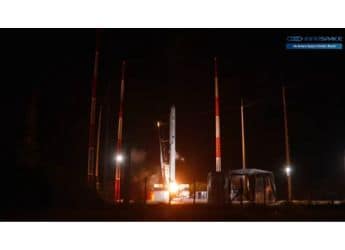- Home
- Internet
- Internet News
- Amazon Says It Will Avoid a Housing Crunch With HQ2 by Planning Better Than It Did in Seattle
Amazon Says It Will Avoid a Housing Crunch With HQ2 by Planning Better Than It Did in Seattle
While the company has received a mostly welcome reception in the Washington region, there is concern that its arrival will drive up housing costs.

Amazon said its new second headquarters in Arlington, Virginia, will not aggravate housing problems as much as the company has in Seattle because it will be able to plan for growth here in a way that it couldn't in earlier years in its home base.
Jay Carney, a senior vice president with the online retail giant, also said the company chose the Washington region for HQ2 and its 25,000 jobs partly because it is "a much more racially diverse area than the Pacific Northwest."
Carney and two other Amazon executives provided new details about HQ2 and touched on other issues facing the company in a wide-ranging meeting Thursday with Washington Post editors and reporters.
They spoke three days after the company posted its first job listings for the Northern Virginia headquarters and said the project was ahead of schedule, primarily because state and county officials had acted quickly to approve multimillion-dollar incentives packages. The company has leased temporary space in Crystal City and will start operations in June instead of October, as originally planned.
The executives said the company plans to post more job listings next week related to Amazon Web Services, its virtual assistant Alexa and the consumer sector.
Eventually, nearly every sector of the company's business will be represented at HQ2, including legal, finance, software development, real estate, human resources and support staff - along with other still-to-be-determined areas, they said.
While the company has received a mostly welcome reception in the Washington region, there is concern that its arrival will drive up housing costs and displace low- and middle-income residents, as it has in Seattle.
Carney noted that Amazon has contributed $80 million to public and private efforts to support affordable housing and prevent homelessness in Seattle. But he said it is primarily the government's responsibility to ensure there is an adequate supply of affordable housing.
"We want to be part of the solution," Carney said. "We want to work really closely with officials and others. . . . But as a citizen I don't want to turn over government functions to private entities."
Carney said when Amazon was starting out in Seattle, officials didn't know the company would undergo explosive growth and create 45,000 jobs. Those high-paying jobs, with an average total compensation of more than $150,000 a year, have contributed to the city's housing crunch and increase in homelessness.
"In Virginia we're not going to have the same experience . . . because we know where we're headed," Carney said. "We're in a place as a company where we hopefully have the kind of stability and confidence in our projected growth that we can plan in a way we couldn't in the past."
Carney is head of global corporate affairs and reports to chief executive Jeff Bezos, who also owns The Washington Post.
Carney said Amazon picked the Washington region for HQ2 primarily for its talent pool. The company has promised to hire 25,000 people in the next 10 to 12 years, in exchange for incentives from the state worth $550 million. The executives reaffirmed their intention to fill as many of the jobs as possible with local hires.
"It's obviously easier to hire people where they are than convince them to move," Carney said.
Amazon saw HQ2 as an opportunity to draw from a more diverse workforce than is available in the Seattle region, Carney said.
"Being on this coast in a place with a diverse workforce creates an upside benefit . . . in terms of bringing different perspectives to the table for decision-making," he said.
According to the 2016 American Community Survey, the metropolitan area comprising Washington D.C., Arlington and Alexandria, Virginia, is 46 percent non-Hispanic white, 25 percent black or African American, 15 percent Hispanic or Latino, 10 percent Asian, and 4 percent mixed-race and other.
Its agreement with the state also allows for the possibility that Amazon would hire an additional 12,850 people and receive $200 million more in grants, but Carney said there are "certainly no plans" for that.
Holly Sullivan, head of worldwide economic development for the company, responded to criticism from some in Arlington that the company had refused to hold an open hearing where anyone from the public could attend and ask questions of company executives. That was a primary objection of protesters who disrupted the Arlington County Board meeting where $23 million in county incentives were approved.
"We followed Arlington rules," said Sullivan, who oversaw the HQ2 selection process. She added that she answered questions at a meeting organized by the Metropolitan Washington Council of Governments. That meeting was invitation-only, although two leaders of the main group opposed to Amazon were invited and declined to attend on grounds that it was not open to all.
Amazon originally planned to split HQ2 with a second headquarters facility with 25,000 jobs in New York, but it pulled out of the deal because of local opposition. Those 25,000 jobs will be distributed among Amazon's 17 technology hubs around the United States, not including Seattle proper, Carney said.
Regarding topics other than HQ2, Carney denied a recent report that computers were firing Amazon warehouse workers who were identified by digital algorithms as being less productive than others. He said computers are used to track productivity but do not fire workers.
"Managers make those decisions," he said.
In response to recent media reports raising questions about Amazon's facial recognition technology, he said the company has policies in place to protect against government agencies and other customers who use the technology in ways that violate individual civil rights.
"If a customer abuses the technology, they are no longer a customer. Full stop," Carney said. "I absolutely understand why there's questions about facial recognition technology . . . What is also true is as of this moment there's been no reported abuse about our service."
Carney also pushed back against criticisms from some politicians and others that Amazon has grown too large and poses a threat to free competition.
"Because of brand recognition - and we're in a variety of things - we're perceived to be much bigger than we are," he said. "We are, charitably, 4 percent of retail in United States . . . We're a big global business, [but] we're not even 1 percent of global retail . . . We are in fierce competition with not just a handful of retailers but thousands, at least 1,000 in United States that we pay close attention to."
© The Washington Post 2019
Get your daily dose of tech news, reviews, and insights, in under 80 characters on Gadgets 360 Turbo. Connect with fellow tech lovers on our Forum. Follow us on X, Facebook, WhatsApp, Threads and Google News for instant updates. Catch all the action on our YouTube channel.
Related Stories
- Samsung Galaxy Unpacked 2025
- ChatGPT
- Redmi Note 14 Pro+
- iPhone 16
- Apple Vision Pro
- Oneplus 12
- OnePlus Nord CE 3 Lite 5G
- iPhone 13
- Xiaomi 14 Pro
- Oppo Find N3
- Tecno Spark Go (2023)
- Realme V30
- Best Phones Under 25000
- Samsung Galaxy S24 Series
- Cryptocurrency
- iQoo 12
- Samsung Galaxy S24 Ultra
- Giottus
- Samsung Galaxy Z Flip 5
- Apple 'Scary Fast'
- Housefull 5
- GoPro Hero 12 Black Review
- Invincible Season 2
- JioGlass
- HD Ready TV
- Laptop Under 50000
- Smartwatch Under 10000
- Latest Mobile Phones
- Compare Phones
- Huawei Nova 15
- Huawei Nova 15 Pro
- Huawei Nova 15 Ultra
- OnePlus 15R
- Realme Narzo 90x 5G
- Realme Narzo 90 5G
- Vivo S50 Pro Mini
- Vivo S50
- Asus ProArt P16
- MacBook Pro 14-inch (M5, 2025)
- Huawei MatePad 11.5 (2026)
- OnePlus Pad Go 2 (5G)
- Huawei Watch 10th Anniversary Edition
- OnePlus Watch Lite
- Acerpure Nitro Z Series 100-inch QLED TV
- Samsung 43 Inch LED Ultra HD (4K) Smart TV (UA43UE81AFULXL)
- Asus ROG Ally
- Nintendo Switch Lite
- Haier 1.6 Ton 5 Star Inverter Split AC (HSU19G-MZAID5BN-INV)
- Haier 1.6 Ton 5 Star Inverter Split AC (HSU19G-MZAIM5BN-INV)

















